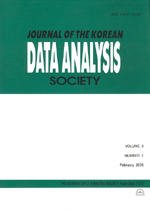임상간호사의 감정노동, 소진 및 이직의도에 관한 연구
A Study on the Emotional Labor, Burnout and Turnover Intention of Clinical Nurses
- 한국자료분석학회
- Journal of The Korean Data Analysis Society (JKDAS)
- Vol.16 No.3
-
2014.061653 - 1667 (15 pages)
- 153

본 연구는 임상간호사의 감정노동과 소진의 정도를 알아보고 이에 따른 이직의도와의 영향을 알아보기 위한 서술적 상관관계 연구이다. 본 연구의 자료는 서울, 강원, 경기권의 5개 종합병원 이상의 병원에서 근무하는 임상간호사 303명을 대상으로 2013년 12월 16일에서 2014년 1월 3일까지 수집하였다. 수집된 자료는 SPSS 21.0 프로그램을 활용하여 기술통계, t-test 및 ANOVA를 이용한 차이검증 상관관계 및 다중회귀분석 등으로 분석하였다. 연구결과 감정노동의 평균평점은 5점 만점에 3.39점, 소진은 7점 만점에 3.64, 이직의도는 5점 만점에 2.84점을 보였으며, 감정노동, 소진 및 이직의도 간에는 모두 유의한 양의 상관관계를 보였다. 임상간호사의 감정노동에 유의한 차이를 보인 일반적 특성은 없었으며, 소진의 경우 연령이 낮을수록, 학력이 낮을수록, 미혼인 경우, 지위가 낮을수록, 고정근무보다 교대근무자가, 임상경력은 1년 미만, 부서이동 경험이 없는 간호사, 급여 수준이 300만원 미만인 경우 소진이 높게 측정되었다. 이직의도의 경우 소진과 유사한 결과를 보였으나 임상경력에 있어서는 3-5년 미만의 경우에서 비교적 높고, 15년 이상이 비교적 낮게 나타났으며, 하루 평균 돌보는 환자 수가 30명 이상인 경우에 이직의도가 상대적으로 높은 결과를 보였다. 따라서 감정노동과 소진을 완화시키고 이직의도를 줄이기 위해서는 실무 차원의 인적자원관리 프로그램 개발을 통한 이직예방 관리방안 마련이 요구되어 진다.
The purpose of this study was to examine the relations among emotional labor, burnout and turnover intention of clinical nurses. The subjects are 303 nurses who work in 6 hospitals. The collected data were analyzed by descriptive statistic, t-test, one way ANOVA, Pearson’s correlation coefficient and enter method multiple regression using for SPSS WIN 21.0. The results of this study were as follows. The average emotional labor was 3.39, burnout 3.64, and turnover intention 2.84. There was justice correlation in mind among emotional labor, burnout and turnover intention. General feature showing significance difference of emotional labor portion was none. In burnout and turnover intention portions, it’s relative to age, education level, job position, clinical career, working pattern, transfer experience, annual income. Emotional labor, burnout and turnover intention among all showed significant positive correlation. This finding suggests that it is needed to improve the working condition with its human resource management program development.
1. 서론
2. 연구방법
3. 연구결과
4. 논의
5. 결론
References
(0)
(0)